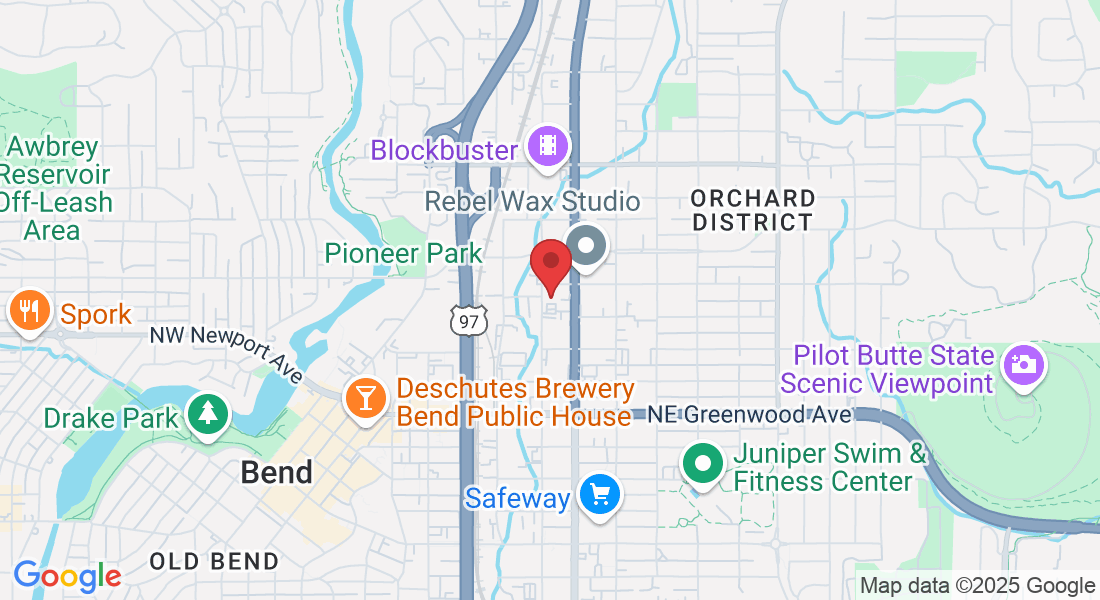Chronic Headache Relief
Free Your Mind From Chronic Headaches
Headaches are an occasional unwelcome guest for many of us, but when they become a frequent visitor, you may be dealing with chronic daily headaches. A broad term that includes various subtypes defined by their frequency and duration. These headaches can be significantly debilitating, but with assertive initial treatment and ongoing management, pain reduction and fewer headaches are achievable. If this strikes a chord with your experience, don't hesitate to schedule an appointment with us.
Discover Unprecedented Relief from Chronic Headaches at PhysioFit: We prioritize personalization in your healthcare journey, acknowledging that individuals with Chronic Headaches necessitate distinct treatment strategies. Utilizing the potency of empirically-supported, fitness-centric physical therapy in bend, we aim to do more than merely alleviate your symptoms. Our mission encompasses the enhancement of your holistic health, prevention of enduring pain, and speeding up your recuperation period, enabling a smooth transition back into your daily routines.
What You Should Know
Migraine headaches can be categorized into two types: episodic and chronic. While chronic migraines happen more than 15 days in a month, episodic ones occur less frequently.
The very medicine you're consuming for headache relief could potentially be causing headaches: Taking pain relievers beyond two days a week, even common ones such as ibuprofen, puts you at risk for what's known as a rebound headache. Similarly, abruptly discontinuing regular pain medication can provoke headaches.
The origin of your headaches may not necessarily be your head: Secondary headaches stem from an underlying health issue, like degenerative disc disease in the spine, sinus infections, or past experiences of head trauma. Although infrequent, persistent headaches and visual disturbances can also be caused by brain tumors.
A proper diagnosis of a TMJ or TMD problem involves a thorough evaluation from a professional.

What Causes Chronic Headaches?
The triggers of numerous chronic daily headaches remain somewhat elusive. Authentic (primary) chronic daily headaches don't present with a detectable root cause.
However, a series of conditions could instigate nonprimary chronic daily headaches, such as:
Vascular Issues: Any inflammation or complications with the blood vessels surrounding or within the brain, including serious events like a stroke, could trigger chronic daily headaches.
Infectious Diseases: Certain infections, notably meningitis, can also result in the manifestation of chronic daily headaches.
Intracranial Pressure Discrepancies: Abnormally high or low pressure within the skull could prompt these types of headaches.
Presence of a Brain Tumor: Brain tumors, whether malignant or benign, could be a potential cause of chronic daily headaches due to the pressure they exert on surrounding brain tissue.
Traumatic Brain Injury: Traumatic events causing injury to the brain can also be a catalyst for chronic daily headaches, as the brain recovers and copes with the trauma.
If any of this information resonates with your current situation, we urge you to schedule an appointment with us immediately. Don't let hip pain diminish your life quality - allow us to help you embark on the path to relief today.
Can Chronic Headaches Be Prevented?
The short answer is yes, chronic headaches can often be prevented, or at least their frequency and intensity can be significantly reduced. The following strategies focus on lifestyle changes and self-care measures which can help you manage and potentially prevent chronic headaches:
Identify Headache Triggers: Proactively documenting each headache in a journal can highlight patterns and triggers, thereby helping you to avoid these. Make sure to record important details like the time the headache started, what you were doing, and how long it lasted.
Cautious Medication Usage: Excessive consumption of headache medications, including over-the-counter ones, can increase the severity and frequency of headaches. It's advisable to consult your doctor for a safe plan to gradually reduce medication use, as abrupt discontinuation can lead to severe side effects.
Quality Sleep: For an average adult, 7-8 hours of sleep a night is essential. Try to maintain a consistent sleep schedule and seek medical advice if you have sleep disturbances, such as snoring.
Regular, Balanced Meals: Aim to eat healthy meals at consistent times daily. Be mindful of potential food and drink triggers like caffeine, and adjust your diet accordingly. Weight loss should be considered if obesity is a concern.
Regular Exercise: Engage in routine aerobic activities to improve your physical and mental well-being and reduce stress. Choose enjoyable activities like walking, swimming, or cycling, and remember to gradually increase the intensity to prevent injury.
Stress Management: Stress can often trigger chronic headaches. Incorporate stress-reducing techniques into your routine such as yoga, tai chi, and meditation. Moreover, staying organized, planning ahead, and maintaining a positive outlook can greatly help in managing stress.
Moderate Caffeine Intake: While caffeine is included in many headache medications due to its pain-alleviating properties, it can also exacerbate headaches. Try to reduce or completely remove caffeine from your diet.

Common Symptoms of Chronic Headaches
Chronic daily headaches, as the name implies, occur more than half the month, lasting for a period exceeding three months. Primary chronic daily headaches are those not precipitated by any underlying health condition.
These headaches can be of shorter or longer duration. Those falling in the long-lasting category persist for over four hours. The types of long-lasting chronic headaches encompass:
Persistent Migraines
Continuous Tension-Type Headache
Newly Appearing Daily Persistent Headache
Hemicrania Continua
Remember, if you resonate with any of the symptoms or conditions mentioned, we highly recommend making an appointment with us for a thorough evaluation and personalized treatment plan.
Please Note: The information provided on our website is intended for general education and is not a substitute for professional medical advice. Each individual's situation and body is different. Therefore, what may work for one person may not work for another. We care about your well-being and advise you to reach out to us to discuss your specific needs before implementing any advice from our website.
Your Source for All Things Physical Therapy in Bend Oregon
The PhysioBlog

Understanding Anterior Shoulder Pain in Weightlifters and CrossFitters
Anterior shoulder pain is a common complaint among weightlifters and CrossFit athletes, often attributed to a variety of factors. One prevalent issue underlying this pain is weakness in the shoulder external rotators. In fact, many athletes experiencing anterior shoulder discomfort tend to have external rotator strength in the lower 50% when compared to age-related norms. This weakness can lead to improper shoulder mechanics and increased stress on the anterior structures of the shoulder joint, particularly the labrum.
The Role of Shoulder External Rotators
The shoulder external rotators, primarily the infraspinatus and teres minor, play a crucial role in stabilizing the humeral head within the glenoid socket. When these muscles are weak, the humeral head can shift forward, leading to excessive stress on the anterior components of the shoulder. This stress is particularly problematic for the labrum, a cartilage structure that provides stability and cushioning within the shoulder joint.
Biceps Tendonitis: A Common Misdiagnosis
Due to the close proximity of the biceps tendon to the labrum, anterior shoulder pain is often misdiagnosed as biceps tendonitis. The long head of the biceps tendon attaches directly to the superior portion of the labrum, making it a common secondary source of pain. However, in many cases, the labrum itself is the primary pain generator, with biceps tendonitis being a secondary condition arising from underlying labral pathology.
Self-Assessment for Biceps Tendonitis
If you have been diagnosed with biceps tendonitis, there is a simple test you can try to help identify whether your pain is truly coming from the biceps tendon or if the underlying cause may be labral-related. Perform a very heavy bicep curl; if this movement does not exacerbate your pain, it is likely that the biceps tendon is not the primary issue. Instead, the labrum and poor shoulder mechanics may be the root cause of your discomfort.
Addressing the Root Cause
To effectively manage and prevent anterior shoulder pain, addressing the root cause—external rotator weakness—is crucial. Incorporating specific strengthening exercises such as:
• External rotation with resistance bands
• Face pulls to engage the rotator cuff and scapular stabilizers
• Wall walks to emphasize rotator cuff and scap stabilizers
• Isometric holds to improve endurance and stability
Additionally, focusing on better technique during overhead lifts, pressing movements, and Olympic lifts can help reduce strain on the anterior shoulder structures.
Conclusion
Anterior shoulder pain in weightlifters and CrossFit athletes is often linked to inadequate external rotator strength, among other factors, leading to poor joint positioning and stress on the labrum. While biceps tendonitis is frequently diagnosed, it may not always be the true cause of pain. By strengthening the external rotators and optimizing shoulder mechanics, athletes can mitigate pain and improve performance. If you’re dealing with persistent shoulder pain, consider assessing your external rotator strength and seeking guidance from the barbell rehab experts and performance therapists at PhysioFit for a tailored rehabilitation approach.
Copyright PhysioFIT 2025 . All rights reserved


